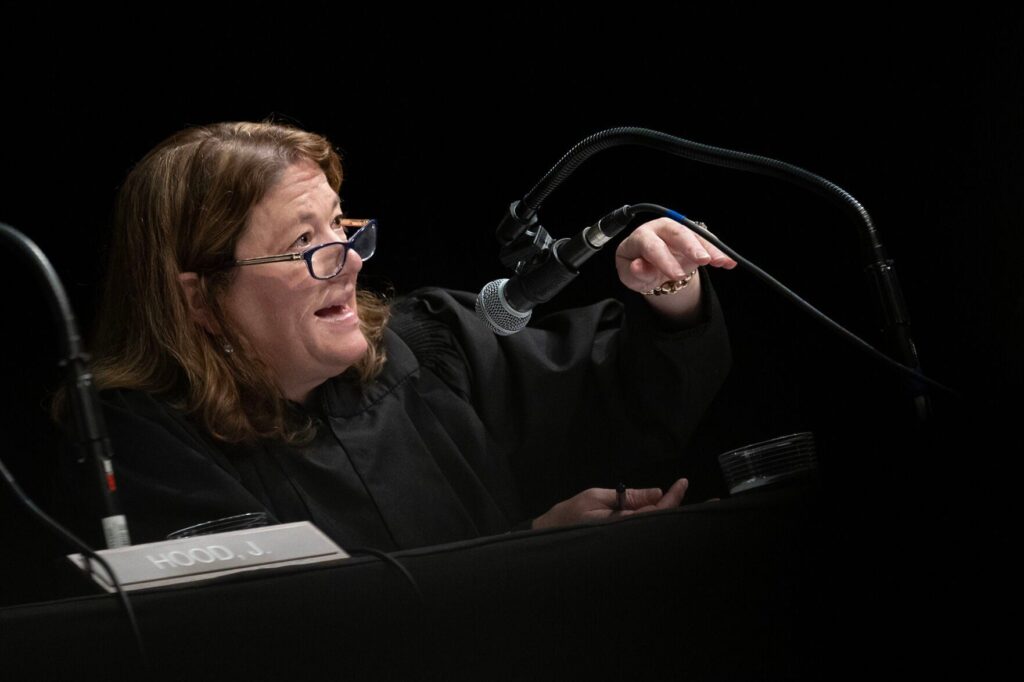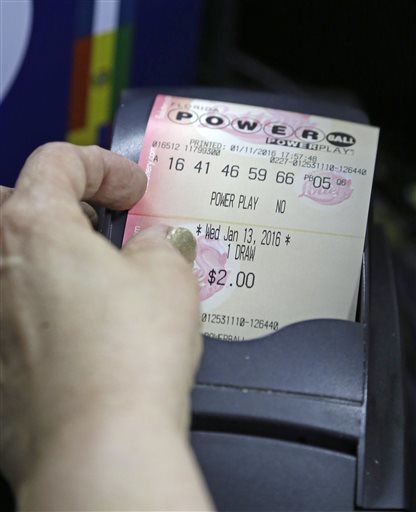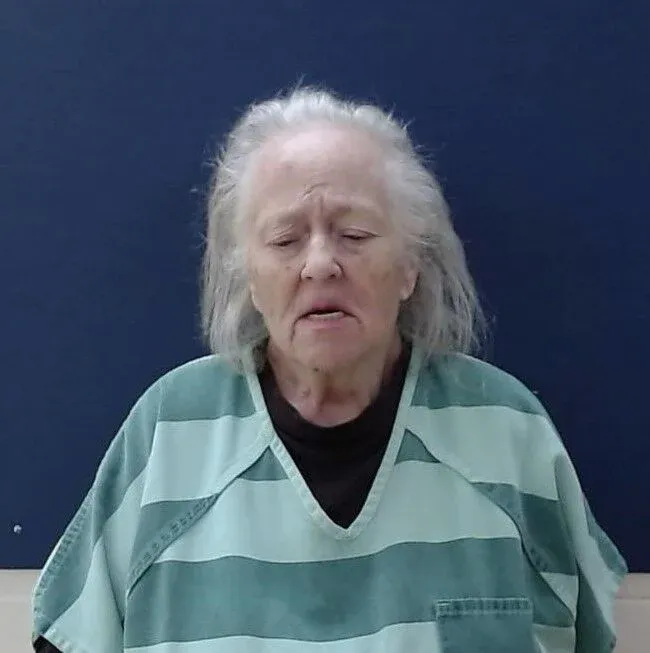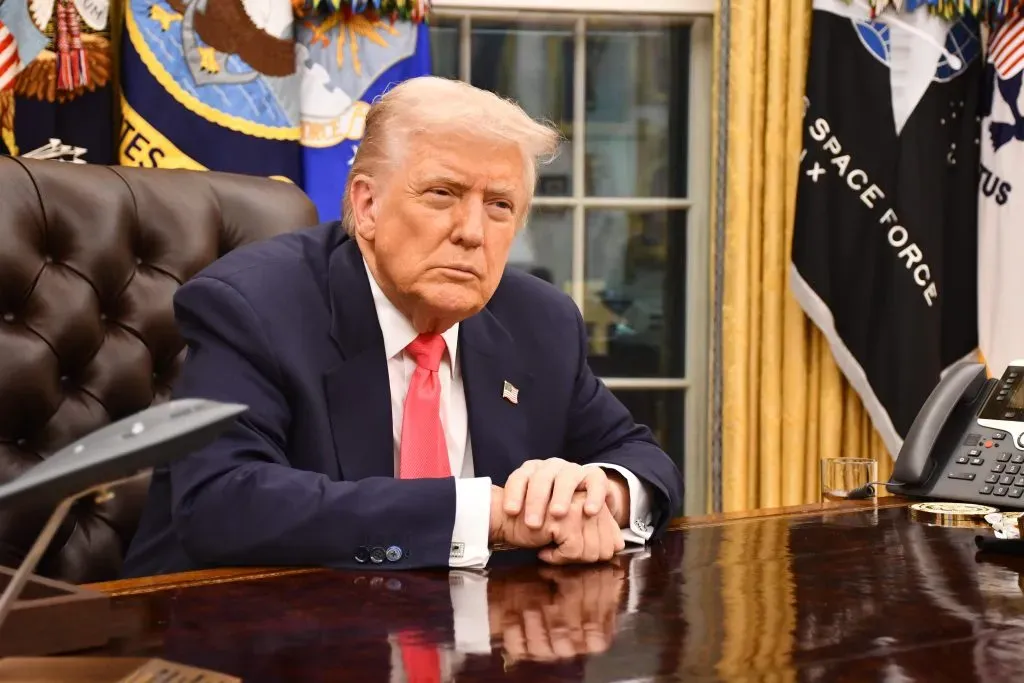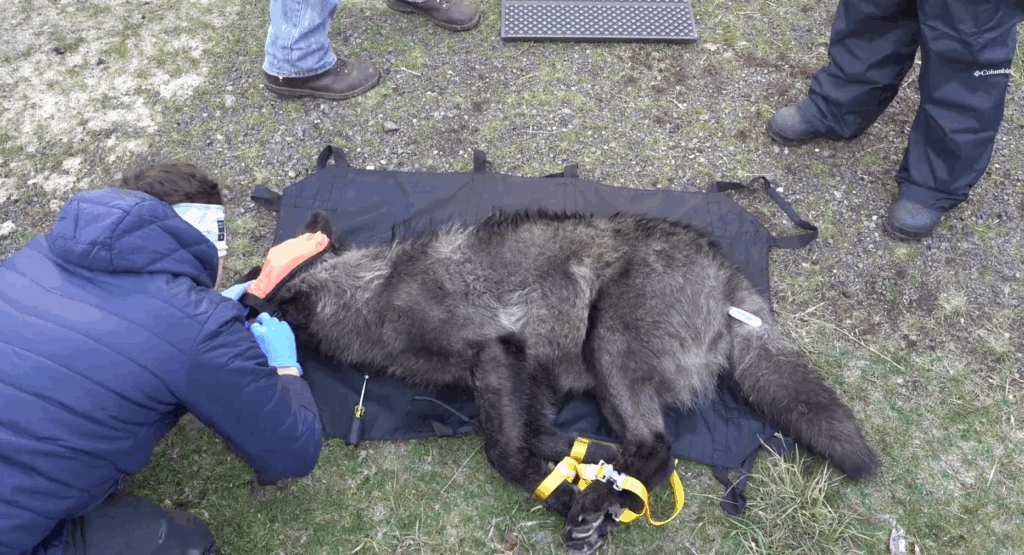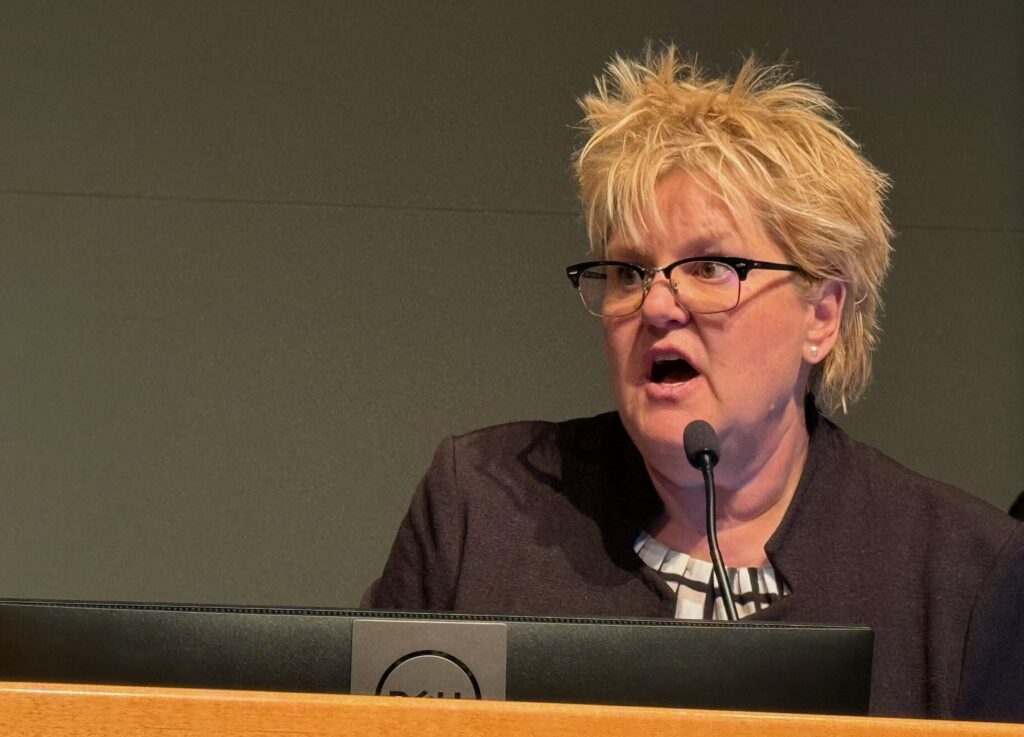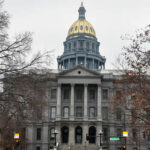Shades of purple: Why the road to the White House runs through Colorado
For former Vermont Gov. Howard Dean, that one day back in the fall of 2003 was just another pit stop on the Democratic primary campaign trail.
His team had decided it was probably a good idea to stump in liberal Boulder County, Colorado. Dean obeyed. He stood outside the gates of the University of Colorado Boulder campus, making his campaign pitch to local reporters.
Then it came.
“The road to the White House goes through the Rocky Mountain West,” Dean proclaimed, according to an account of Adam Schrager and Robert Witwer, authors of “The Blueprint — How the Democrats won Colorado.”
Dean uttered those words in Colorado. In a state that to date had voted for exactly one Democratic presidential nominee — Bill Clinton in 1992 — since Lyndon B. Johnson’s 1964 landslide victory.
Colorado? A critical swing state?
Dean saw it coming.
How did THAT happen?
The grand prize for winning Colorado is nine electoral votes. The number is modest compared to other, much bigger battlegrounds such as Florida and Ohio (with 29 and 18 electoral votes, respectively). But with an ever-shrinking number of states truly too close to call, nine votes can be the difference for the presidential nominees between making and taking the phone call on election night.
Winning the swing state of Colorado is a puzzle. Candidates have to perform well in the populous Denver suburbs. They have to talk their way into the hearts of the many Latino and young voters. They have to turn out their base. But the ultimate task in Colorado is finding a way to make sense of the riddle that is the unaffiliated voter.
A political strategist in Colorado learns early on the doctrine of the tripartite voting public. Today the electorate in the state is neatly split: One-third likes their Democrats (roughly), one-third favors Republicans (they very slightly outnumber the Dems) — and one-third is sitting right in the middle. Or, as the political punditry dubs them: they are independent, undecided, unaffiliated. Thirty-seven percent, the majority, fall into the latter category.
Thanks to Colorado’s rapid growth, that share is likely going to go up, since most out-of-staters who come to the Centennial State for its Rocky Mountain lifestyle and booming economy tend to fall into the unaffiliated camp.
Some of them may lean toward one party or the other. But Denver pollster Floyd Ciruli says a good 40 to 50 percent of independents are truly in the soft middle. In 2000 these people showed just how volatile they are as a voting block when up to 17 percent in some counties flocked toward Green Party candidate Ralph Nader.
“That puts us in a position where you can’t just be partisan in Colorado,” says Craig Hughes, the senior advisor for both of Barack Obama’s campaigns in the state.
But political experts and strategists have put their talking heads together and identified some overarching trends. The significant number of Hispanic voters and droves of millennials push the state to the left on social issues. But when the conversation shifts to the economy, Ciruli argues, “We are probably dead center.”
In Colorado, a state that also has a large military presence, one of the defining questions is as well going to be if current trends of a national security election will hold, or if voters make their decision on the mantra of the ’92 Clinton campaign, that “It’s the economy, stupid.”
“Colorado is a state with more economic mobility,” says Kenneth Bickers, a political science professor and commentator who teaches at the University of Colorado in Boulder. “People move up the income latter a little more quickly than in other states, and that too has a kind of disorienting effect in terms of partisan affiliation. People are still trying to figure out: Does this mean I should be a Democrat? Or should I be a Republican?”
For all the undecided voters, there is also a deep red-blue divide that cleaves right through the state.
In Colorado, the pot-smoking, flannel-wearing 21st century hippy loves life in ultra-liberal enclaves like Boulder. At the same time, in the state capitol in Denver, just 30 miles down the road, a duly-elected YouTube-chaplain-turned-Republican-legislator preaches a cultural agenda that makes Ronald Reagan’s social-conservatism gospel sound like rap music.
Places such as Boulder have been a liberal oasis in Colorado for generations. But something happened, something that made two resounding Obama victories in the state (he won by 9 points the first time and 5 points the second time) possible after decades of predominantly Republican rule.
Robert Loevy, veteran political science professor emeritus at Colorado College in Colorado Springs, believes he has the answer. His argument: The passage of the Civil Rights Act removed racial segregation as the binding force between Southern white voters and the Democratic Party. The South — and its electoral votes — fell into the hands of Republicans. Democrats subsequently turned their heads westward and laid eyes on Colorado to make up their losses.
“It had become a swing state in 1988,” says Loevy, who has studied presidential campaigns extensively. “George H.W. Bush and his opponent, Michael Dukakis, were both campaigning in Colorado the weekend before Election Day. We never had that happen before.”
That liberal uprising in the solidly red state of Colorado, Loevy says, was solidified in the early 2000s. Democrats started building up a vast support infrastructure for legislative candidates and took control of both chambers in 2004. (Schrager and Witwer lay out how exactly that went down in “The Blueprint.”)
The GOP had lost its majority. Colorado was in play.
Swing state? Swing county!
Colorado’s electoral map is partitioned into safely Democratic and even safer Republican counties. Just three of the state’s 64 counties are truly competitive — Arapahoe, Larimer and Jefferson — though three more (Adams, Ouray and Alamosa) may also qualify. Jefferson County, however, is the hotbed for political activity. In the past it has often decided a candidate’s fate. A popular political axiom has it, “As goes Jeffco, so goes Colorado.”
To explain how the once deeply red suburban Denver counties of Arapahoe and Jefferson became swing counties that have lately favored Democrats, Loevy takes another look into the history books.
“When the Republican Party went over to the religious right in the ’80s under Reagan, it became anti-abortion, anti-stem cell research, anti-gay and lesbian rights — what we call social conservatism,” Loevy says. The reason for that: A large number of conservative white voters in the post-segregation South were up for grabs, and they loved Reagan’s message. But the same wasn’t true for Colorado.
“When Republicans began cranking up social conservativism in Colorado, it didn’t work, because there wasn’t that large white vote like in the South,” Loevy says. “Rather than pick up white voters, the effect of it was to drive upper-class, well-educated, economically successful previously Republican white voters over to the Democrats.” Exhibits A and B: the upscale suburbs in Jefferson and Arapahoe.
But if these former GOP strongholds have recently trended toward Democrats, how are Republicans supposed to win any statewide or presidential race in Colorado when a majority of voters lives in the Denver Metro area?
The 2014 midterm elections brought the answer. Cory Gardner.
Cory Gardner — hometown boy as presidential candidate role model
Tony Rayl is the editor of the Yuma Pioneer, a weekly newspaper with a circulation of 2,300. Almost 30 years ago, he graduated from CU-Boulder and moved to Yuma, out on Colorado’s deep-red Eastern Plains, to take a job with the Pioneer “for one or two years.” At least that was the plan back then. Rayl still lives and works out there, along with his wife and kids.
Most of his neighbors, friends and the people he talks to as he reports the paper’s stories love the idea of having a “homeboy” in the U.S. Senate, he said during a recent interview.
Gardner often boasted about his proud Yuma heritage on the campaign trail last fall. His upset victory over Democrat Mark Udall marked the first time a sitting Colorado senator was defeated since 1978. What did then-U.S. Rep. Gardner, who had represented the state’s staunchly conservative 4th Congressional District, do to sway more moderate voters?
Loevy says it was by distancing himself from the Republican social conservatives’ agenda.
“Cory Gardner was very moderate in some of his positions,” he says. “The Republicans lost the gubernatorial election because Bob Beauprez stayed arch conservative and hammered on it. Meanwhile Cory Gardner was off saying, ‘No, I don’t hold this (personhood) position anymore.’ He didn’t talk about these issues the way Beauprez did — and he won.”
A few months later, in March 2015, Colorado Republican Chairman Ryan Call was up for re-election. He had orchestrated a Senate win, successful congressional campaigns and a narrow takeover of the state Senate. But state Republicans didn’t reward Call. Instead, Steve House, a candidate from the political outsider camp, took over the reins of the Colorado GOP.
Ciruli agrees with Loevy that Gardner can be the poster boy and role model for the 2016 GOP presidential nominee in Colorado.
“While maintaining his principles of conservatism, Gardner went out of his way to either avoid divisive social issues or file off the rough edges — in his case, abortion,” the pollster said earlier this summer. “That is really the key to winning. Given the social tolerance of the state, I don’t think a really evangelical-style candidate is going to do really well.” He adds that Gardner also spent a lot of time talking about what people don’t like — Washington, D.C.
The anti-Washington-establishment campaign playbook has since become a survival guide for any GOP candidate vying for the Republican nomination — just look at Donald Trump’s and Ted Cruz’s surge. They may very well gather moral support from Gardner’s and House’s victories.
Ciruli says the secret to Gardner’s victory was his strong performance in the GOP bastions of Douglas, El Paso and Weld counties. “He maximized all his strongest areas and minimized losing Arapahoe and Jefferson County.”
In February, four months after Gardner’s campaign culminated on Election Night, Katie Behnke sits in a sober conference room in the offices of the GOP fundraising shop Starboard Group in Greenwood Village, just south of central Denver. Behnke was the deputy campaign manager and designated CFO of the Gardner Senate bid.
“Colorado is a state that is very mindful about candidates who are present, who have well-organized, well-messaged teams that operate statewide,” she says. “You have to have a footprint that covers the entire state. If you are too Denver Metro-centric, that becomes a problem.” Behnke knows a thing or two about campaigning, even on the presidential level. In 2008 she and her partner Kristin Strohm raised $8.7 million for Team Romney in a sleep-depriving three-month daze.
It’s all about the Front Range. Or TV ads. It depends on where you live.
Back in Yuma, Rayl didn’t really notice too many candidates who actually followed the four-corners-of-the-state-campaign advice.
“People would like to see the presidential candidates out here,” he says. “But the reality is, they are a presidential candidate. They go to the Front Range where everybody lives.”
More than 80 percent of Colorado’s voters live on the Front Range, stretching from Greeley and Fort Collins in the north to Pueblo in the south. Democrats usually do well on this stretch — especially in the Denver Metro area, which roughly 60 percent of all Coloradans call home.
The Center for Voting and Democracy counted that the Obama/Biden and Romney/Ryan teams came to Colorado a combined 23 times in 2012. The vast majority of those campaign events happened in Front Range communities.
If people who live in the overwhelmingly Republican eastern and western parts of Colorado want to see the candidates in action, for the most part they get behind the wheel and haul toward the Front Range. Rayl says the truly interested often do that. But the reality, he adds, is that “the truly interested” is a relatively small group in politics. Instead, most voters get to know their candidates primarily through the news — and via an onslaught of (often negative) campaign ads.
In 2012 the Obama campaign dropped $27 million for TV ads in Colorado between April 11 and Election Day. The Obama campaign outspent Romney 2-to-1 — Romney’s campaign spent $13.7 million. Add another $22.3 million from allied interest groups and you’ll get the final 2013 TV ad spending price tag, according to Kantar Media: $73 million. That money paid for 120,182 ads.
Outside groups such as the Colorado chapter of the Koch-backed Americans for Prosperity on the right and comparable organizations on the left also dug deep into their pockets to spend money either directly or through subsidiaries.
Did the campaigns and their allies really have THAT much to say?
A promise to talk TO Coloradans and not just ABOUT them
After their painful loss in 2012, the Republican National Committee tapped a small group of key party players to find out what exactly had gone wrong and what to do about it. Two years later, their counterparts at the Democratic National Committee were tasked with the same thing. Why on earth had the party suffered such a drubbing in the midterm elections?
Both groups reported back a lot of distinct reasons. But, in surprising unison, within the span of two years both parties admitted to themselves: We are talking a lot, but we are not really saying much.
Take, for example, the Democratic Victory Task Force findings. “The Democratic Party is loosely understood as a long list of policy statements and not as people with a common set of core values.” And, “We have to reconnect with the reason we want to win — and that reason is the people.”
Or look at the RNC “autoposy,” dubbed the Growth & Opportunity Project. “The Republican Party needs to stop talking to itself. We have become expert in how to provide ideological reinforcement to like-minded people, but devastatingly we have lost the ability to be persuasive with, or welcoming to, those who do not agree with us on every issue.”
On Boulder’s CU campus, Ryan Langhorst and Anna Vallad worked hard to convince their peers that paying attention when the presidential campaigns come to Colorado is not a waste of time.
Vallad was the president of the College Republicans here during the 2014 spring semester, and Langhorst was her Democratic counterpart at that time.
“A lot of people who aren’t at CU see a lot of liberal bias on campus, but there are a lot more Republicans and Libertarians here than are noticed,” said Vallad, a Colorado native and senior political science and economics double major, in an interview earlier this year. Democratic candidates have traditionally pilgrimaged here. President Obama came in 2012, and his picture adorns the wall of a local student burger joint where Robert Redford used to wait tables.
But Republicans? Their savvy campaign strategists think twice — or more — before they spend money and time to send their candidate into the liberal bastion.
Just a couple of months ago, the full GOP candidate lineup descended upon Boulder to offer its economic agendas at a presidential debate on campus. Except for a very select few, students and the general public had to watch it on TV. But the RNC will undoubtedly argue that all the ballyhoo surrounding the event will have served to engage — and energize — Republican voters in Boulder, not to mention throughout the state.
“There are a lot of students who are still trying to find out what they believe in,” Vallad said. Back in 2012, her interest in politics and jumping into the campaign trenches really started to spark. She didn’t hear much from the Republican campaign. So she stayed home.
When she is vetting a candidate, Vallad looks for authenticity, someone who stands by his or her values, no matter what. She praises Cory Gardner.
Langhorst gets agitated when he hears talk of apathetic youth. “It’s not just apathy,” said the senior political science and economic studies double major during a phone conversation in the spring, a few weeks before he graduated. “They have to be given something to care about, just like any other group.”
He brought up the issue of student debt — but not as a partisan talking point. Rather, he thinks talking about loans and how to repay them is part of a wider issue, a placeholder debate. “What student loans come down to is the issue of opportunity. We are told that the U.S. is a nation of opportunity where if you play by the rules and you work hard, you’ll have a chance. That is not necessarily the case, as many people are finding out.”
Langhorst says he and many youths are looking for candidates who can reignite that vision, that sense of hope. Barack Obama’s 2008 campaign is hovering over everything he says.
The broader question, though, remains: In a time when fear over domestic and international terrorism seems to reign, how much does that stifle the longing for economic opportunity? Latest national polls seem to indicate that, at least for the moment, national security is the No. 1 issue on voter’s minds. Such situational moods certainly have the ability to alter longer-term trends in a state’s electoral direction.
Earlier this year, before the recent spate of terrorist attacks abroad and at home, Tony Rayl said he and his fellow Yumans out on the conservative Eastern Plains would rather like to see a more domestic focus. “Getting things straightened up in our country,” as he put it. Since then, national polls have indicated a mood swing in the electorate, particularly on the Republican side, advocating first and foremost for a tougher foreign policy approach in the wake of continuous ISIS attacks. While there is no recent polling data specifically for Colorado available, such sentiments certainly affect parts of the state, particularly areas with strong military presence, such as the Colorado Springs region. A change in foreign policy could mean one thing here: deployment.
Winning the ‘burbs
No matter the most-pressing issue, though, Colorado’s youth will be a crucial component of any winning 2016 coalition. But it will only be one leg of the stool — and probably not the one providing the main support.
That support has to come out of the Denver suburbs. And here, Republicans and especially Democrats will have to pay tribute to Colorado’s role as a swing state, Ciruli says. “[The Democrats’] very heavy orientation on social issues alienates some of those people. Many of those folks have guns, like to hunt, recreate in different styles than your urban Boulder/Denver Democrat. That’s also the group that hasn’t benefitted as much from the economic recovery.”
In a memo floated to soft-money donors across Colorado, Craig Hughes’ Denver-based consulting firm, Hilltop Strategies, wrote after the 2014 midterms: “Votes from metro and suburban areas continue to grow at the expense of Colorado, however … Democrats should be extremely concerned about their drop in performance in rural and blue-collar areas of Colorado.”
Ciruli says the trends of the 2014 election might very well spill over into and spell trouble for what he determined early on to be the “Clinton versus X” contest. “Democrats are struggling with white working class voters. They are losing men overwhelmingly, but they are also losing women. That’s what got them to nearly lose Pueblo County, which is a classic Democratic county with lots of labor and white working class and Hispanics.”
Latinos won’t give away their votes for nothing
Ken Bickers says that aside from national security and the economy, 2016 will see candidates struggle with two other issues in Colorado — one local, one national (with a huge local impact).
“The issue that we are likely going to see the candidates dancing around in Colorado is marijuana legalization,” says the CU political scientist. “It seems to be working reasonably well, and it is bringing in a lot of tax revenue for the state. But if they come out for legalization when they are in Colorado, they will have to account for that when they are back in North Carolina.”
The second topic is immigration, “an important issue nationally,” Bickers says, that will become “part of a candidate’s swing state portfolio.” One in five Coloradans is Hispanic, and Hispanic voters make up about 15 percent of the electorate.
Here, the fiery primary campaign rhetoric of GOP frontrunners Trump and Cruz may do lasting damage for a general election matchup, analysts say.
Salvador Hernandez is a native Mexican who has lived in Nevada since he was 15. Now 26 years old, he moved to Denver in 2014 to become an outreach coordinator for the Latino voter advocacy organization Mi Familia Vota. He says many members of his community think immigration reform isn’t just necessary for the sake of reforming the system.
“We care about the economy, about jobs. Education is important. But if you don’t want us here, we can’t see further down the road. First we have to make sure that we are not being deported or being prosecuted just because of how we look. Then we can look further into education and jobs.”
In an emailed statement to supporters after the most recent Republican debate in Las Vegas, Felipe Benitez — a Mi Familia Vota national spokesperson — echoed Hernandez’s sentiment.
“It is appalling that Cruz and Rubio, sons of immigrants, the sons of refugees whose families benefited from the generosity and the opportunities that our country provides to immigrants, are now spearheading the attacks on the immigrant community started by Donald Trump,” he said.
“Today, the Republican Presidential hopefuls kissed good-bye to any support from the immigrant and Latino communities, a division that will probably last for decades.”
Who’s the candidate in Colorado?
Who, then, would be the ideal candidate for Colorado?
Wisconsin Gov. Scott Walker, who was born in Colorado Springs, has long ago left the building. State Treasurer Walker Stapleton is Jeb Bush’s second cousin, and the family has many friends, ties and donors here — but the Bush campaign is struggling in the polls. In 1992, Hillary Clinton’s husband, Bill, pulled off an unlikely win in Colorado.
But the most recent Quinnipiac poll, taken in mid-November, has the Democratic nominee-in-waiting, Hillary Clinton, clearly trailing Ben Carson in a hypothetical general election matchup, 52-38 percent. Clinton ran behind top-polling Republicans across the board, among them Marco Rubio and Donald Trump —11 percentage points on average.
While Carson’s brief surge in the national polls has deflated since then, a straw poll taken at an El Paso County Republican watch party after the Dec. 15 debate had Ted Cruz as the winner and Carson coming in second, indicating a consistent level of support among Colorado’s hardcore GOP voters.
Kenneth Bickers isn’t sure there is any Republican candidate who’s the perfect fit for Colorado’s many-faceted voters.
“The question is whether they can find someone who can appeal to younger voters, or at least make that less lopsided in terms of support for the Democratic candidate,” Bickers says. “Someone who can pull together social conservatives in El Paso, Weld and Larimer counties with a more libertarian strain, and suburban folks who would give Republicans a look but want it to be a more mainstream, kitchen-table Republican, somebody who worries about the price of groceries and the price of gasoline.”
If current national security trends continue to hold true, any candidate will also have to assure Colorado voters that he or she can keep them safe. Here, candidates additionally have to navigate the narrow line between being tough on foreign policy and also being aware of domestic attacks such as the recent shooting at a Planned Parenthood facility in Colorado Springs — likely to be a major 2016 rallying cry among liberal voters.
Loevy adds that the problem for any GOP candidate will have to appeal to the staunchly conservative wing in the primaries, which might hurt the nominee’s odds in November.
If Hillary Clinton winds up with the nomination, she can count on the support of her husband and warm words from her former boss, Barack Obama. Listening to their advice might be a good idea for the former senator and chief diplomat. After all, the two men are the only Democratic presidential nominees in the last half century who have won in Colorado.
Kenneth Bickers says that in more ways than one, the 2016 election will be about the current officeholder — not just about the president’s (and his former secretary of state’s) national security record, which has come to be the premier line of attack for Republicans.
“It’ll be interesting to see if Hillary Clinton can have the same kind of newness that Barack Obama had, of breaking ceilings, of being the first,” he says. “If she is able to assemble younger and more educated voters along with minority voters as the first female presidential candidate of a major party, she may be a very good candidate for the state. Young voters are important in two different ways. One is their vote. And the other is their energy.”
***
Back in 2003, Howard Dean might not have won the Democratic nomination to run against George W. Bush. And Bush easily defeated Democrat John Kerry in Colorado. But none of that made Dean’s statement that “The road to the White House goes through the Rocky Mountain West” any less pertinent.
The 21st century candidate has to hit Colorado hard and often on the way to the White House. Nine electoral votes are up for grabs once again next year.
University of Nevada Las Vegas political scientist Robert Lang, ahead of the Democratic presidential debate in Sin City in October, mirrored Dean’s 2003 prognosis.
“There is a strategy now, and the Democrats know the strategy well, where this part of the Southern Rocky Mountain West is a firewall to get to 270 electoral votes,” Lang said. Add to Colorado’s nine electoral votes Nevada’s six and New Mexico’s five — and the region’s accumulated 20 electoral votes can offset a loss in a hyper-competitive large state such as Ohio, he argued.
Let the games begin.
Lars Gesing is assistant director of CU News Corps, an explanatory journalism project at the University of Colorado Boulder. Gesing, a former intern at The Colorado Statesman, has traveled the country, visiting every presidential battleground state for his project “States in Play.” Find his reporting at http://cunewscorps.com/category/states-in-play/ and follow him on Twitter @LarsGesing



